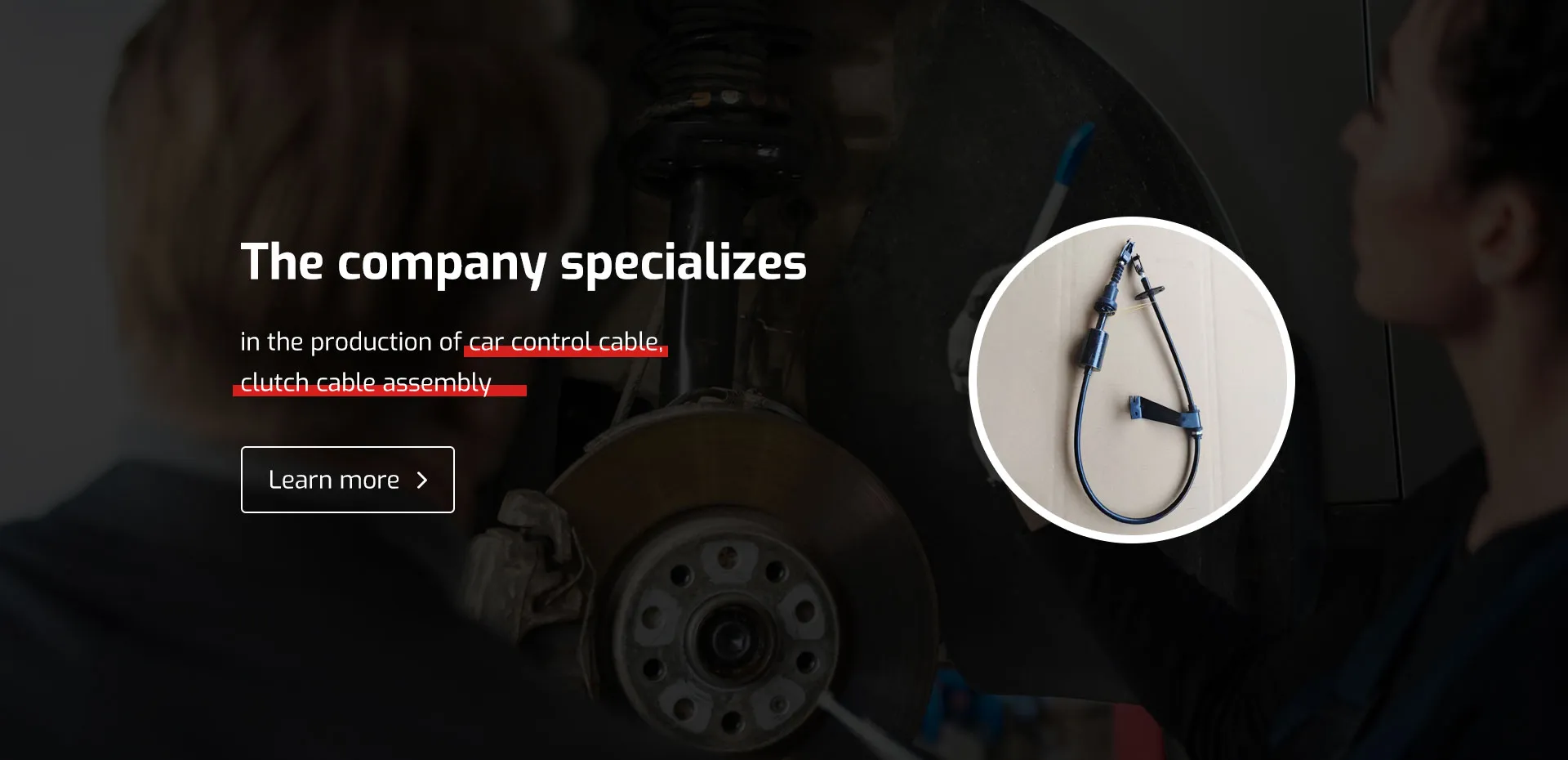Understanding Rear Derailleur Cable Installation and Maintenance for Optimal Bike Performance
Understanding Rear Derailleur Cables An Essential Guide for Cyclists
When it comes to cycling, one of the key components that ensure a smooth ride is the rear derailleur. The rear derailleur cable plays a crucial role in the functionality of this component, allowing cyclists to shift gears effortlessly. In this article, we'll delve into what rear derailleur cables are, their importance, how to maintain them, and how to replace them if needed.
What is a Rear Derailleur Cable?
The rear derailleur cable is a thin wire that runs from the shifter located on the handlebars to the rear derailleur situated near the rear wheel. When a cyclist shifts gears by moving the shifter, the cable pulls or releases the derailleur, which in turn moves the chain from one sprocket to another. This movement is essential for changing gears, allowing the cyclist to adapt to different terrains and riding conditions.
Importance of Rear Derailleur Cables
1. Precision in Shifting A well-functioning cable ensures that the derailleur moves accurately and precisely, which is crucial for smooth gear changes. Poor performance of the cable can lead to misalignment, causing the chain to skip or fail to shift, resulting in an inefficient and frustrating ride.
2. Durability and Reliability Regular maintenance of the rear derailleur cable can prolong its life, making it a reliable partner for cyclists. Over time, however, cables can fray and lose tension, leading to performance issues.
3. Safety Properly functioning gears are vital for safe handling of the bike, especially when navigating steep terrains or during fast descents. A malfunctioning cable can compromise the cyclist’s ability to control their speed and power transfer effectively.
Maintenance Tips
Maintaining the rear derailleur cable is essential for optimal performance
. Here are some key maintenance tips- Regular Inspections Check the cable frequently for signs of wear and fraying. Look for any rust or dirt buildup that can inhibit the cable’s movement and breaking. - Lubrication Applying a suitable lubricant can help ensure easy movement and reduce wear. Be careful not to over-lubricate, as this can attract dirt.
rear derailleur cable

- Keep It Clean Cleaning the cable housing and the derailleur regularly is crucial to prevent debris from affecting performance. Use a soft cloth and a cleaning solution suitable for bike components.
- Check Tension Ensure that the cable tension is adequate for smooth shifting. Adjusting the tension can often resolve shifting issues without needing to replace the cable.
Replacing the Rear Derailleur Cable
If your rear derailleur cable has seen better days, replacing it is a straightforward process
1. Gather Tools You’ll need cable cutters, a 5 mm Allen wrench, and a new derailleur cable.
2. Remove the Old Cable Use the Allen wrench to detach the derailleur. Unravel the old cable from both the shifter and the derailleur.
3. Install the New Cable Thread the new cable through the shifter, making sure it is secured properly. Run it through the housing and attach it to the derailleur.
4. Adjust Tension Once the new cable is in place, adjust the tension to ensure that shifts are smooth and accurate.
5. Test the Gears Finally, take your bike for a test ride to ensure everything functions correctly.
Conclusion
The rear derailleur cable is a crucial component of a bicycle's shifting system. Understanding its importance, maintaining it diligently, and knowing how to replace it can greatly enhance your cycling experience. With proper care, your derailleur cable will contribute to countless enjoyable rides in various terrains, allowing you to focus on what truly matters—enjoying the ride.
-
Upgrade Your Vehicle with High-Quality Handbrake CablesNewsNov.01,2024
-
Optimize Your Bike's Performance with Quality CablesNewsNov.01,2024
-
Enhance Your Vehicle's Performance with Quality Clutch ComponentsNewsNov.01,2024
-
Elevate Your Vehicle's Performance with Quality Throttle CablesNewsNov.01,2024
-
Elevate Your Vehicle's Performance with Quality CablesNewsNov.01,2024
-
Affordable Solutions for Your Cable NeedsNewsNov.01,2024
